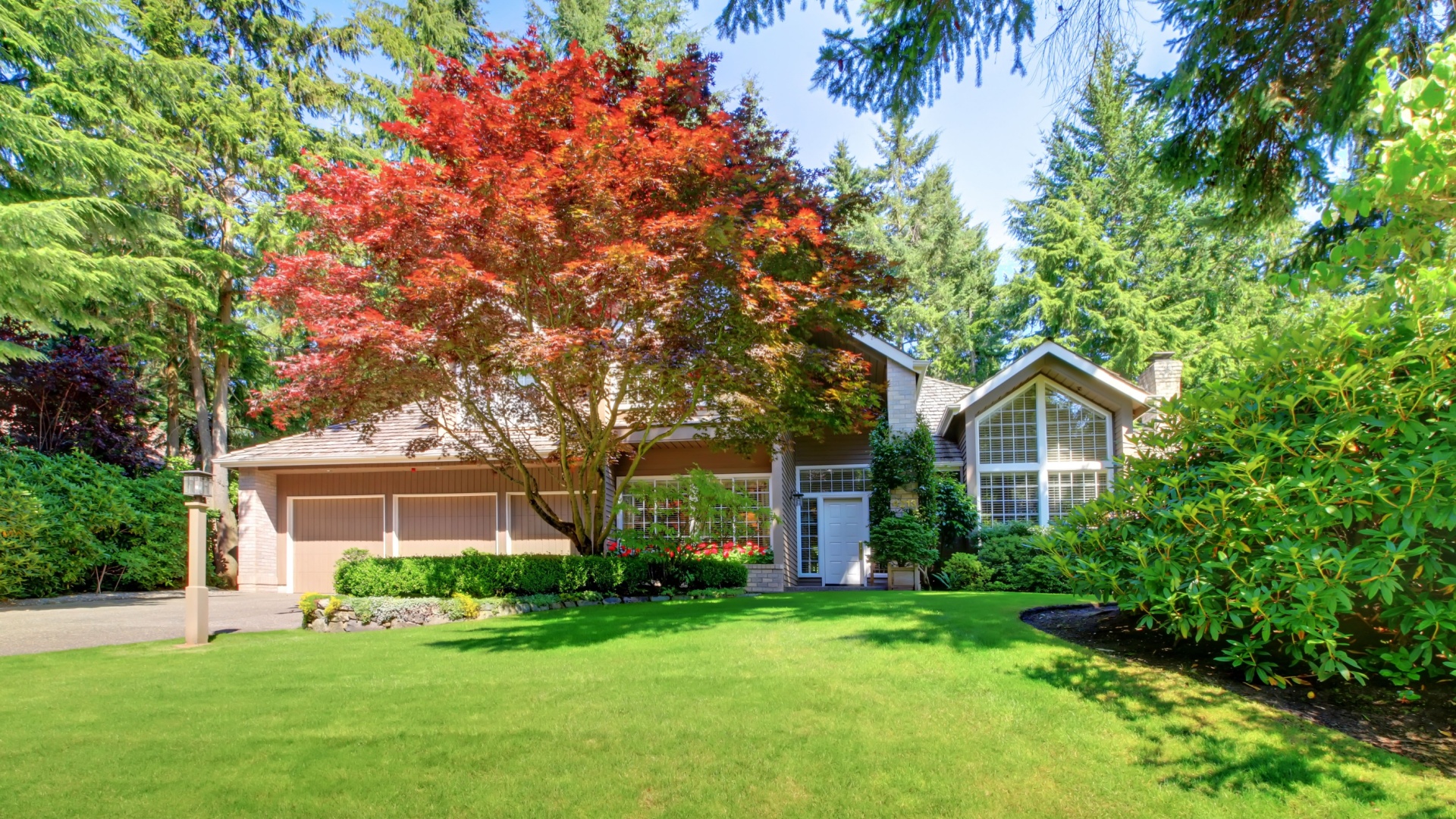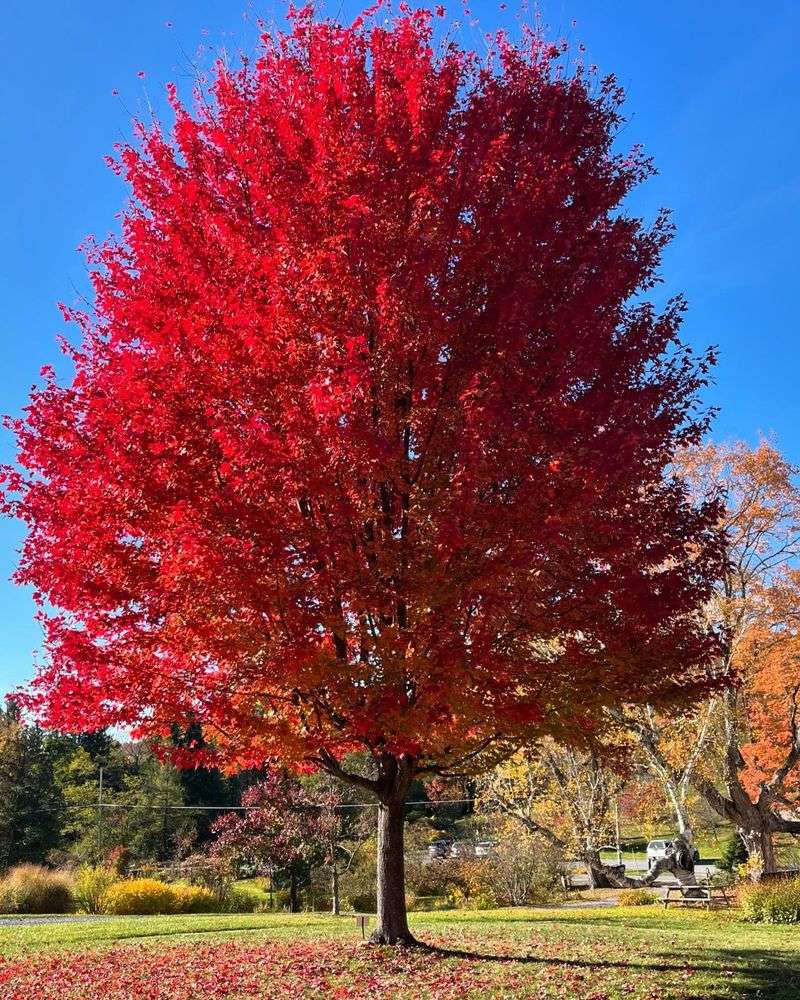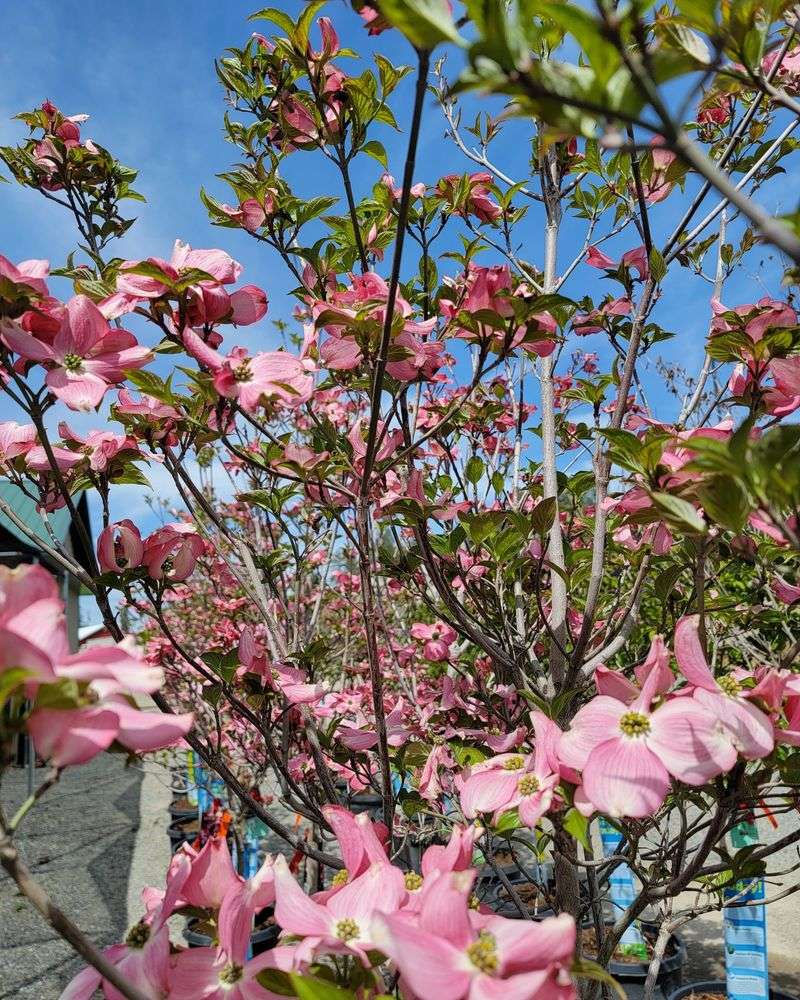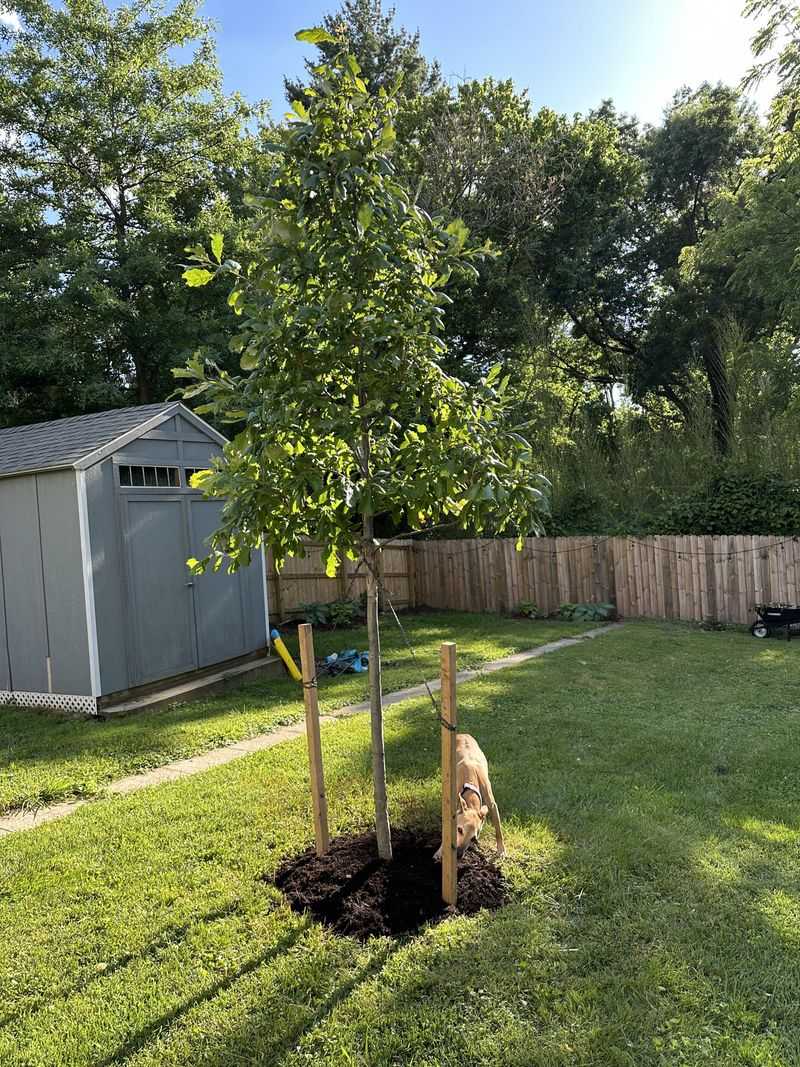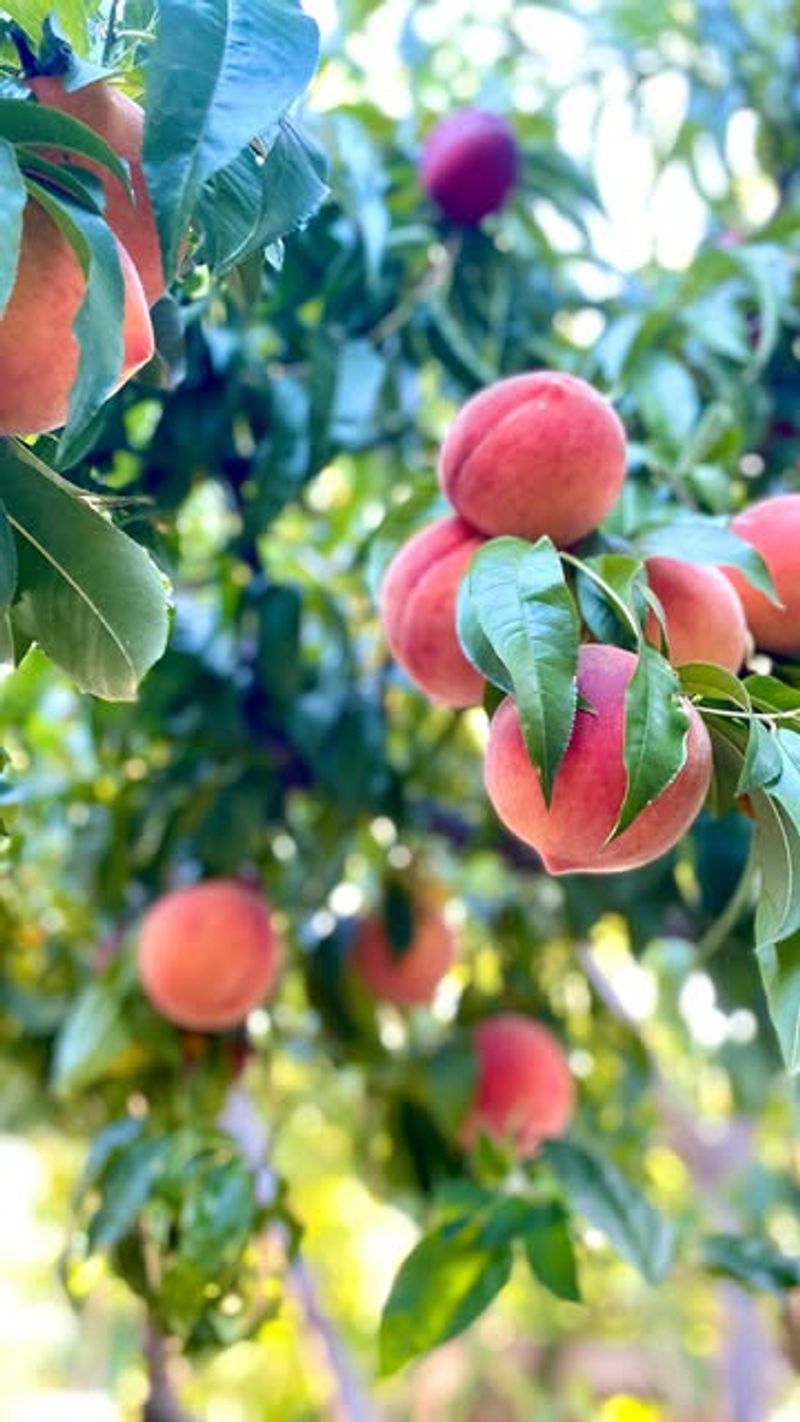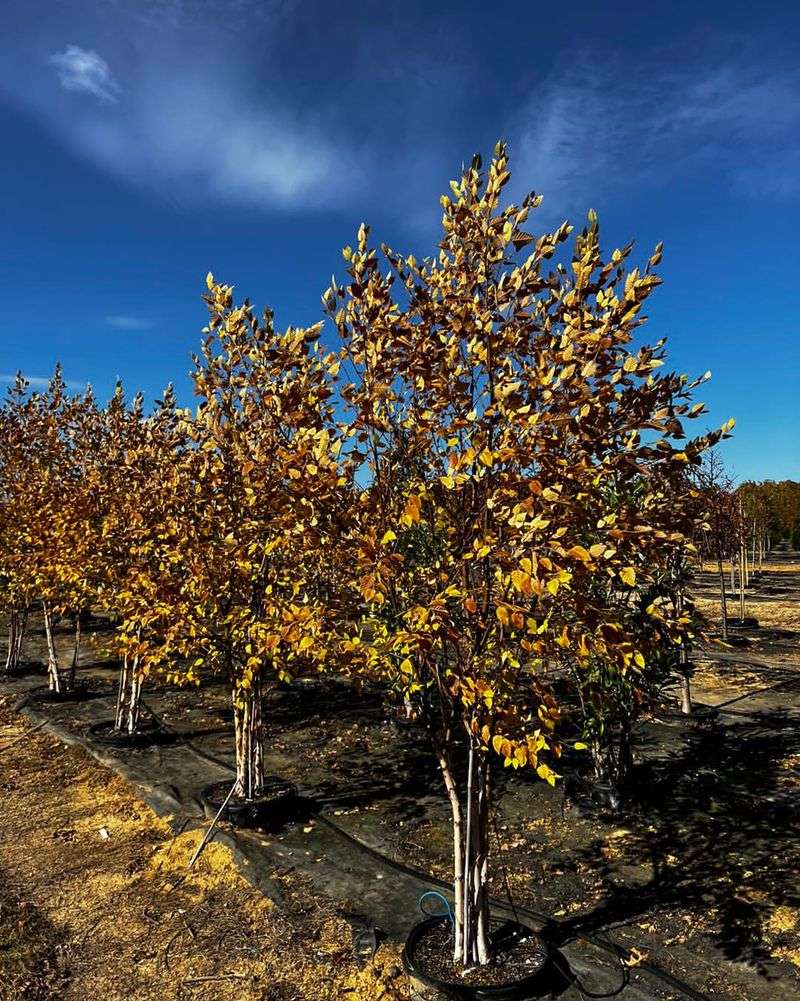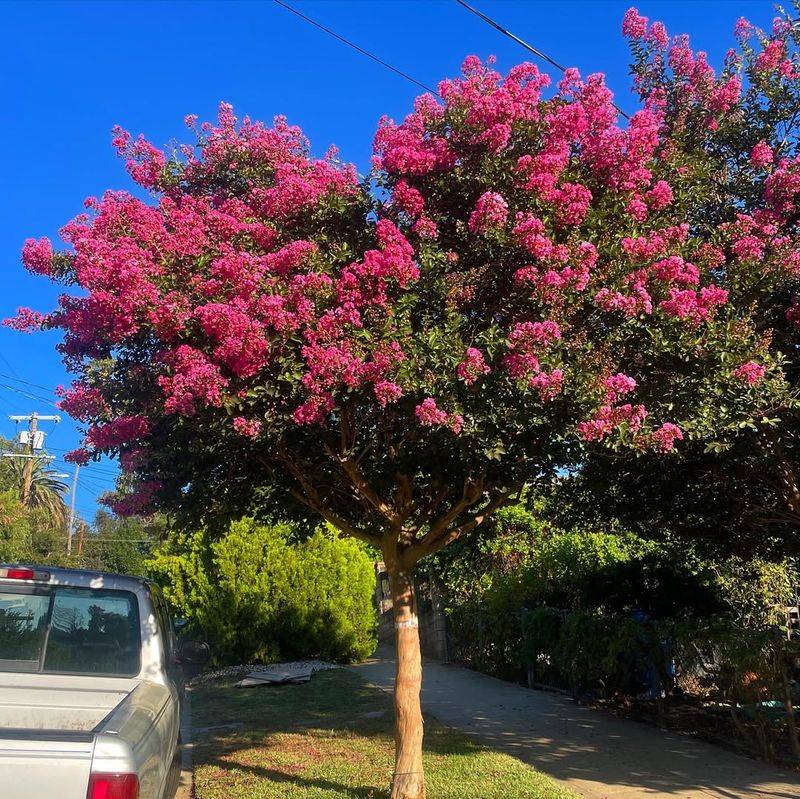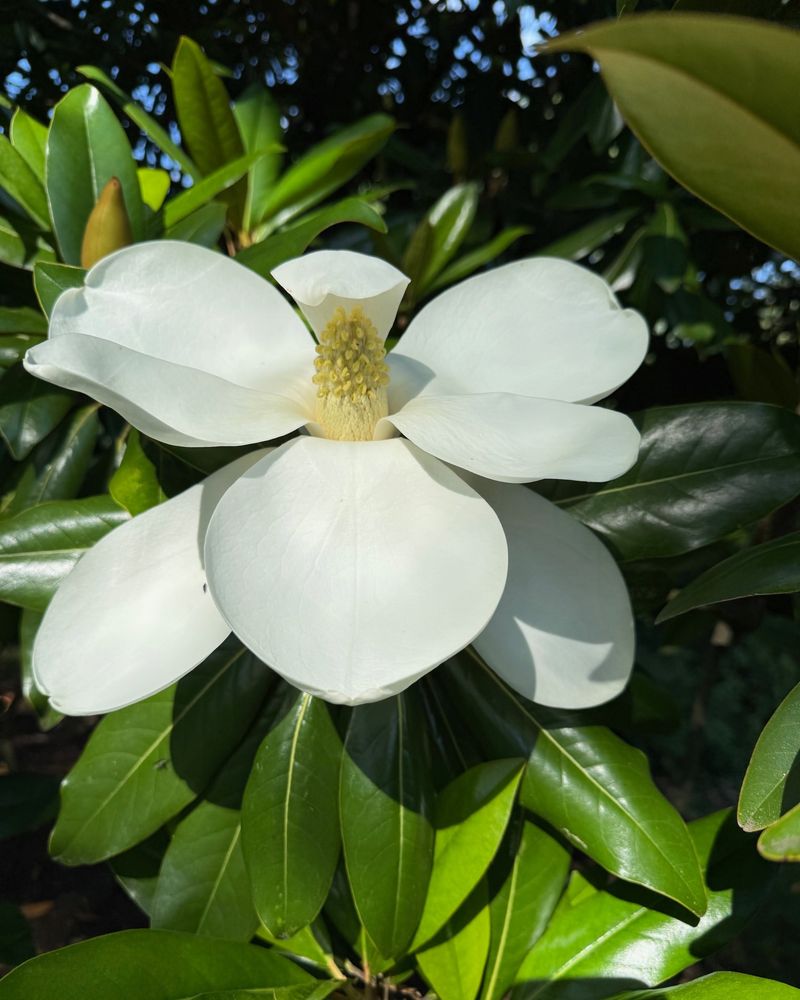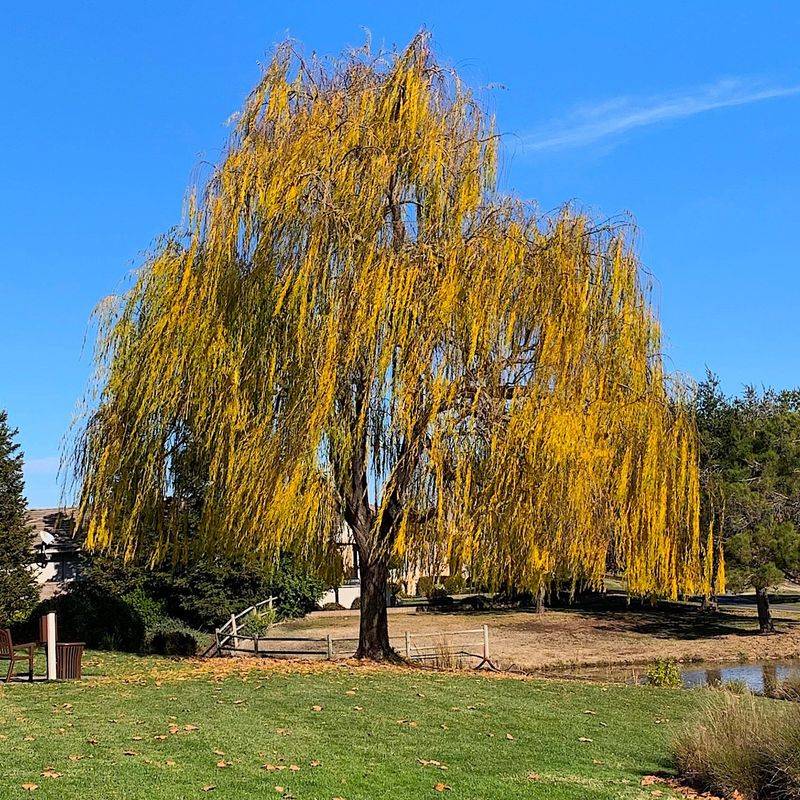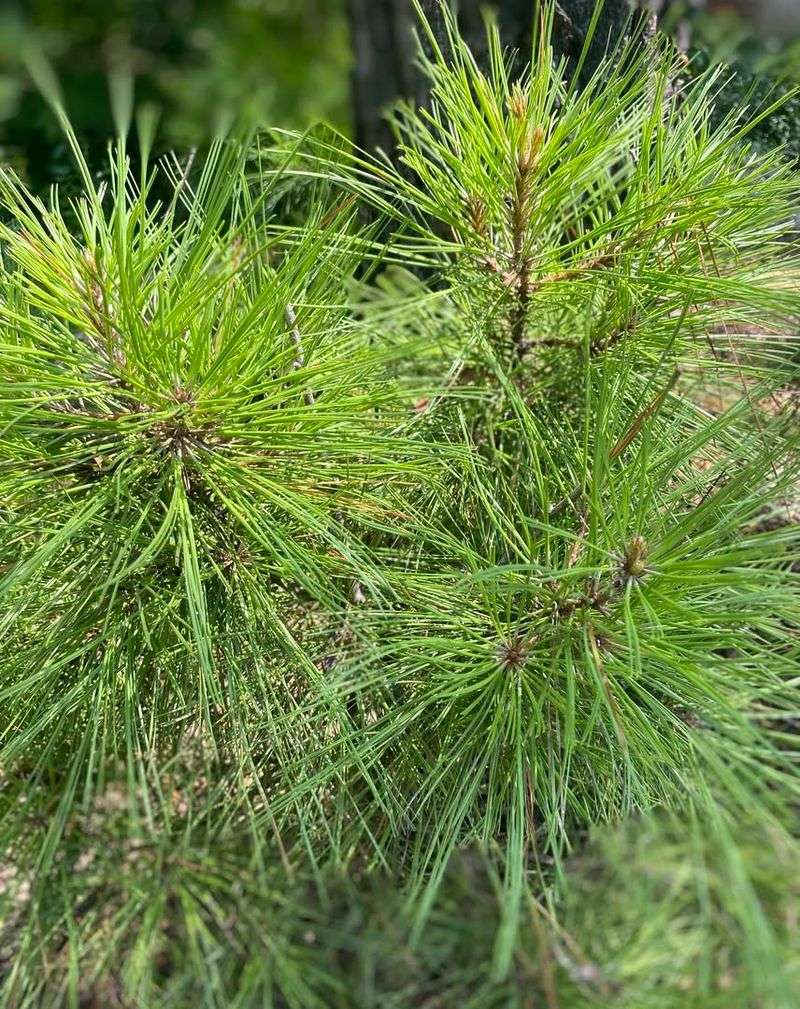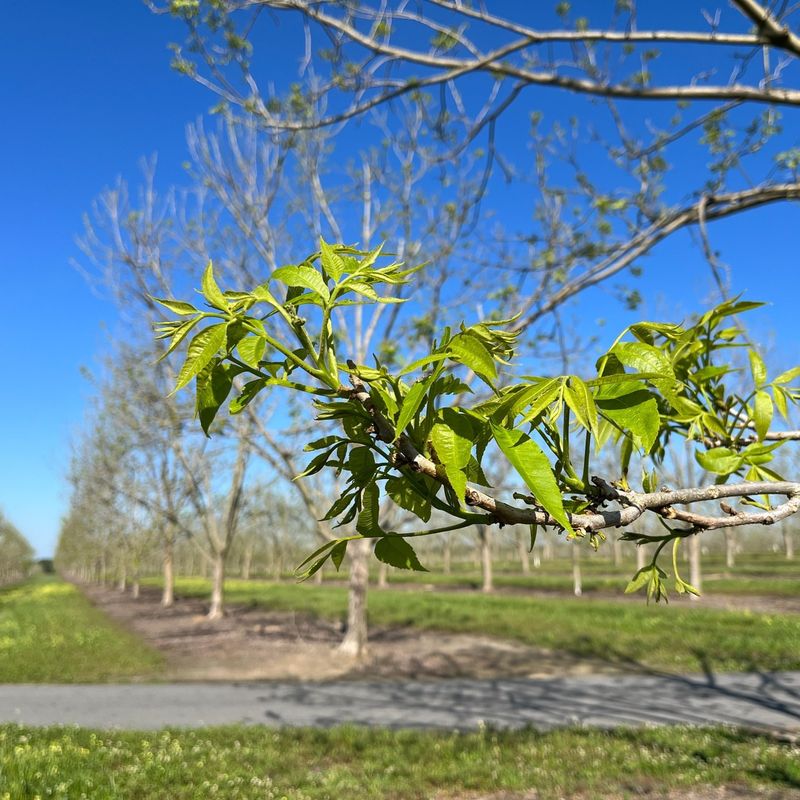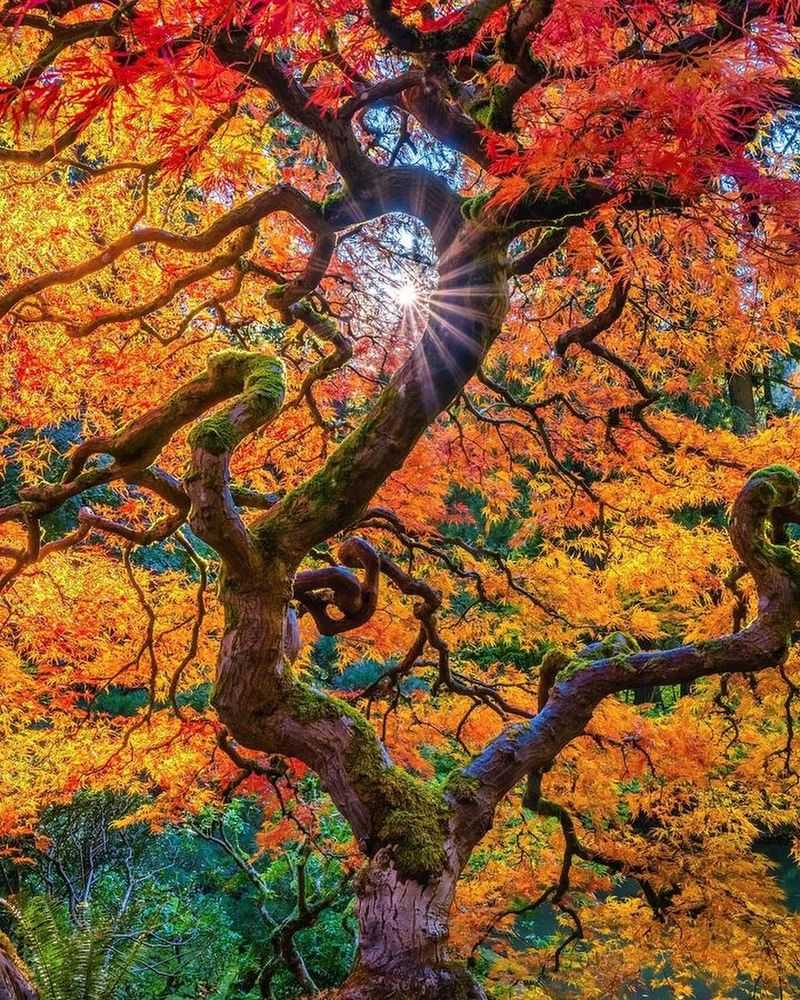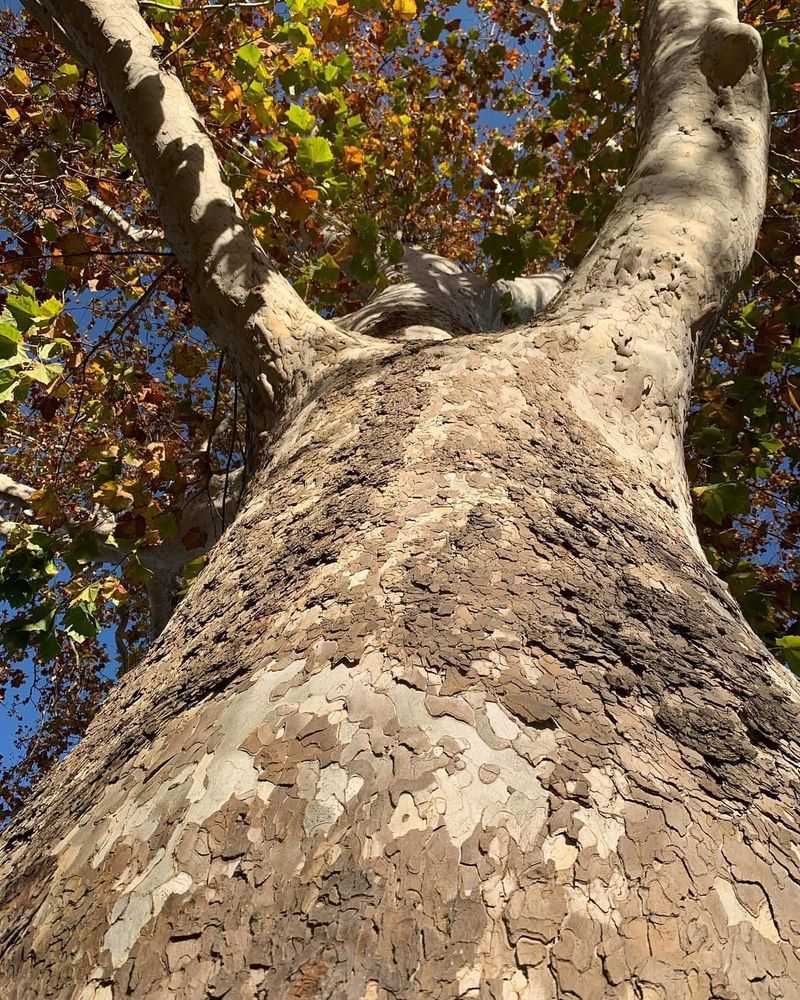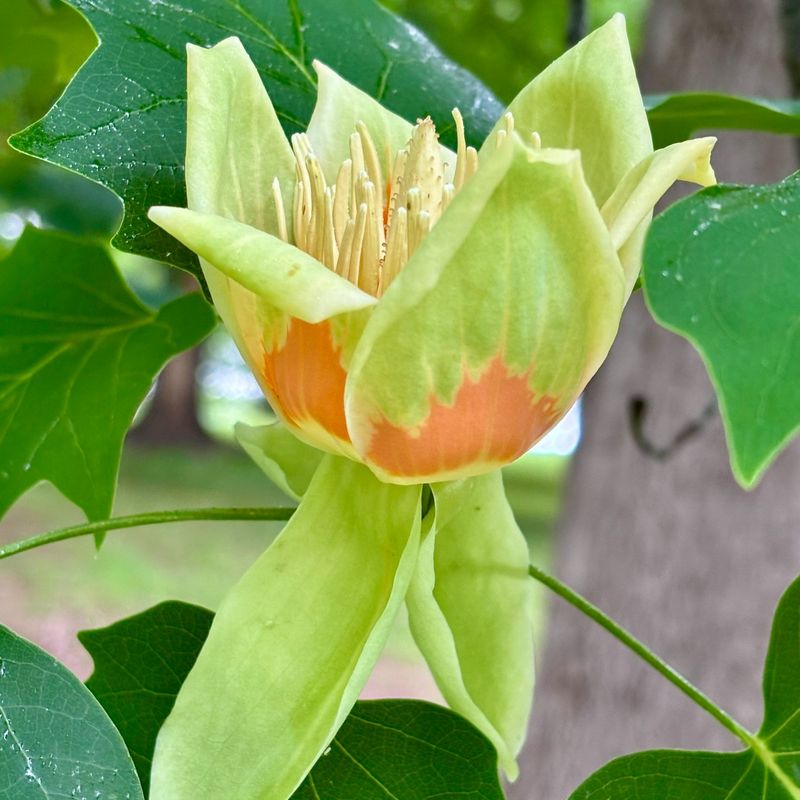Fall in Georgia brings welcome rain showers that help newly planted trees establish strong roots before winter arrives. Planting trees just before these autumn rains gives them a natural watering boost and ideal growing conditions.
Whether you’re looking to add shade, color, or wildlife habitat to your Georgia landscape, now’s the perfect time to get planting!
1. Majestic Red Maple
Red maples thrive when planted before Georgia’s fall rains, developing extensive root systems before winter dormancy. Their fiery autumn display transforms landscapes with brilliant scarlet and orange hues that outshine most other trees.
Native to Georgia’s forests, these adaptable trees handle both wet and dry conditions once established. They grow relatively quickly, reaching heights of 40-60 feet while providing excellent shade for decades to come.
2. Elegant Dogwood
Flowering dogwoods represent Georgia’s natural beauty and make perfect additions to partly shaded yards. Fall planting allows these understory trees to establish before summer heat arrives. Spring brings stunning white or pink bracts (not actual flowers), while autumn offers scarlet-purple leaves and bright red berries that attract birds.
Growing 15-25 feet tall, dogwoods create perfect focal points in landscaping without overwhelming smaller properties.
3. Sturdy White Oak
White oaks represent strength and longevity in Georgia landscapes. Planting these magnificent trees before fall rains helps them develop strong taproots that anchor them for centuries. Unlike some faster-growing species, white oaks invest in dense, rot-resistant wood and extensive root systems.
Their distinctive lobed leaves turn beautiful burgundy-red in autumn, and their acorns provide essential food for wildlife including deer, turkeys, and squirrels.
4. Fruitful Peach Tree
Georgia’s nickname isn’t the Peach State for nothing! Fall-planted peach trees develop stronger roots than spring-planted ones, leading to better fruit production in future seasons. Choose varieties bred specifically for Georgia’s climate, like ‘Elberta’ or ‘Belle of Georgia.’
These trees require full sun and well-drained soil. With proper care, your home-grown peaches will taste infinitely better than store-bought ones, typically ready for harvest from May through August.
5. Fast-Growing River Birch
River birches love Georgia’s fall rain patterns and establish quickly when planted this time of year. Their exfoliating cinnamon-colored bark creates year-round visual interest even after leaves drop. These adaptable native trees handle wet spots where other species might fail.
Often planted in multi-trunk formations, river birches grow rapidly to 40-70 feet tall. Their triangular leaves turn bright yellow in fall, creating a striking contrast against their distinctive peeling bark.
6. Colorful Crape Myrtle
Fall planting gives crape myrtles a head start on establishing roots before their summer flowering season. These versatile trees offer months of colorful blooms in shades ranging from white to pink, purple, and crimson.
Georgia gardeners love their drought tolerance once established and their naturally beautiful exfoliating bark. Available in sizes from shrub-like 10-footers to trees reaching 30+ feet, there’s a crape myrtle perfect for any landscape situation.
7. Reliable Eastern Redbud
Eastern redbuds deliver early spring color with magenta flowers that emerge directly from branches before leaves appear. Fall planting helps these native trees establish strong foundations before their spectacular spring show.
Heart-shaped leaves emerge bronzy-purple before turning green, then golden-yellow in autumn. Growing 20-30 feet tall with a similar spread, redbuds work beautifully as understory trees in woodland gardens or as standalone specimens in smaller yards.
8. Sweet Southern Magnolia
Southern magnolias embody Georgia’s garden heritage with their glossy evergreen leaves and massive fragrant white blossoms. Fall planting allows these iconic trees to settle in during cooler months. Growing 60-80 feet tall with spreads of 30-50 feet, they need space to shine.
Their leathery leaves create natural mulch as they drop, while seed cones with bright red seeds attract wildlife. For smaller spaces, consider compact varieties like ‘Little Gem.’
9. Graceful Weeping Willow
Weeping willows create dramatic landscape statements near ponds or in areas with high moisture. Their cascading branches sway gracefully in Georgia’s gentle breezes, creating living curtains of green. Fall planting helps these moisture-loving trees establish before summer heat arrives.
Growing rapidly to 30-40 feet tall with equal spread, willows provide quick shade and erosion control along waterways. Their early spring leaf-out provides welcome greenery after winter’s bareness.
10. Fragrant Loblolly Pine
Loblolly pines represent Georgia’s timber heritage while providing year-round greenery in home landscapes. Their distinctive fragrance fills the air after rain showers, creating a quintessential Southern atmosphere. Fall planting gives these fast-growing evergreens a chance to establish before summer heat.
Growing 60-90 feet tall, loblollies create excellent windbreaks and privacy screens. Their dropped needles make excellent natural mulch, and their seeds attract numerous bird species.
11. Productive Pecan Tree
Pecan trees planted before fall rains develop stronger root systems that support future nut production. These stately natives create excellent shade while eventually producing delicious nuts for holiday pies and snacking.
Georgia’s climate perfectly suits pecan cultivation, though they require patience – expect to wait 7-10 years for significant harvests. Choose improved varieties like ‘Stuart’ or ‘Desirable’ for better disease resistance and nut quality.
12. Hardy Bald Cypress
Bald cypress trees defy expectations by thriving in both wet and dry conditions across Georgia. Despite being deciduous conifers that drop their feathery needles in fall, they provide excellent year-round interest. Their distinctive “knees” may emerge in wetter settings, adding unique character.
Fall planting allows these adaptable trees time to establish before summer heat. Growing 50-70 feet tall with a pyramidal shape when young, they develop broader, flat-topped crowns with age.
13. Vibrant Japanese Maple
Japanese maples add unmatched elegance to Georgia gardens with their delicate leaves and stunning fall colors. Fall planting gives these somewhat finicky trees the best chance at establishing healthy root systems.
Choose locations with morning sun and afternoon shade to prevent leaf scorch. Varieties range from dwarf forms reaching only 6 feet to larger specimens growing 15-25 feet tall. Their sculptural branching patterns create winter interest long after leaves have fallen.
14. Resilient American Sycamore
American sycamores make dramatic statements in larger Georgia landscapes with their mottled white-and-brown exfoliating bark. Fall planting helps these massive trees establish before summer’s heat arrives.
Growing rapidly to heights of 75-100 feet with massive spreading canopies, they need space to reach their potential. Their large maple-like leaves create excellent summer shade, while their interesting seed balls dangle throughout winter, attracting goldfinches and other small birds.
15. Ornamental Cherry Tree
Ornamental cherry trees bring breathtaking spring displays to Georgia landscapes when planted before fall rains. Their brief but spectacular flowering season creates unforgettable garden moments. Varieties like ‘Yoshino’ and ‘Kwanzan’ perform particularly well in Georgia’s climate.
Growing 15-25 feet tall with similar spreads, these trees work beautifully in residential settings. Their pink or white blossoms create stunning focal points, especially when underplanted with spring bulbs.
16. Versatile American Holly
American hollies provide year-round structure and winter color with their evergreen leaves and bright red berries. Fall planting allows these native trees to establish strong roots before summer heat arrives. Growing 15-50 feet tall depending on variety, hollies work well as privacy screens, specimen trees, or natural Christmas decorations.
Plant both male and female trees to ensure berry production, which attracts birds while creating classic holiday decorating material.
17. Showy Tulip Poplar
Tulip poplars grow remarkably fast when planted before Georgia’s fall rains. Their distinctive tulip-shaped spring flowers often go unnoticed high in the canopy, but their straight trunks and golden fall color make lasting impressions.
Native to Georgia forests, these trees can reach heights of 70-90 feet with straight, limbless trunks that early settlers hollowed into canoes. Their tulip-shaped leaves turn bright yellow in fall, creating stunning golden canopies against autumn skies.

